Dagstuhl Seminar 18371
Knowledge Graphs: New Directions for Knowledge Representation on the Semantic Web
( Sep 09 – Sep 14, 2018 )
Permalink
Organizers
- Piero Andrea Bonatti (University of Naples, IT)
- Stefan Decker (RWTH Aachen, DE)
- Axel Polleres (Wirtschaftsuniversität Wien, AT)
- Valentina Presutti (CNR - Rome, IT)
Contact
- Shida Kunz (for scientific matters)
- Annette Beyer (for administrative matters)
Impacts
- Knowledge Graphs - Hogan, Aidan; Zimmermann, Antoine; Staab, Steffen; Ngonga Ngomo, Axel-Cyrille; Navigli, Roberto; Polleres, Axel; Kirrane, Sabrina; Labra Gayo, Jose Emilio; Sequeda, Juan Federico; Gutierrez, Claudio; Melo, Gerard de; d'Amato, Claudia; Blomqvist, Eva - Cornell University : arXiv.org, 2020. - 130 S..
- Knowledge Graphs - Hogan, Aidan; Zimmermann, Antoine; Staab, Steffen; Ngonga Ngomo, Axel-Cyrille; Navigli, Roberto; Polleres, Axel; Kirrane, Sabrina; Labra Gayo, Jose Emilio; Sequeda, Juan Federico; Gutierrez, Claudio; Melo, Gerard de; d'Amato, Claudia; Blomqvist, Eva - New York : ACM, 2021. - 37 pp - (ACM computing surveys ; 54. 2021, 4 : Article 71).
- Knowledge Graphs - Hogan, Aidan; Neumaier, Sebastian; Rashid, Sabbir M.; Rula, Anisa; Schmelzeisen, Lukas; Cochez, Michael; Zimmermann, Antoine; Staab, Steffen; Ngonga Ngomo, Axel-Cyrille; Navigli, Roberto; Polleres, Axel; Kirrane, Sabrina; Labra Gayo, Jose Emilio; Sequeda, Juan Federico; Gutierrez, Claudio; Melo, Gerard de; d'Amato, Claudia; Blomqvist, Eva - San Rafael : Morgan & Claypool Publishers, 2021. - XIX, 237 pp - (Synthesis Lectures on Data, Semantics, and Knowledge ; 22). ISBN: 978-1-636-39235-6 / 1-636-39235-0.
- Knowledge graphs : article - Gutierrez, Claudio; Sequeda, Juan Federico - New York : ACM, 2021. - pp 96-104 - (Communications of the ACM ; 84. 2021. 3).
In 2001 Berners-Lee et al. stated that "The Semantic Web is an extension of the current web in which information is given well-defined meaning, better enabling computers and people to work in cooperation."
The time since the publication of the paper and creation of the foundations for the Semantic Web can be roughly divided in three phases: The first phase focused on bringing Knowledge Representation to Web Standards, e.g., with the development of OWL. The second phase focused on data management, linked data and potential applications. In the third, more recent phase, with the emergence of real world applications, emphasis is put again on the notion of Knowledge, while maintaining the large graph aspect: Knowledge Graphs have a large number of applications like semantic search based on entities and relations, disambiguation of natural language, deep reasoning (e.g. IBM Watson), machine reading (e.g. text summarization), entity consolidation for Big Data, and text analytics. Others are exploring the application of Knowledge Graphs in industrial and scientific applications.
The shared characteristic by all these applications can be expressed as a challenge: the capability of combining diverse reasoning methods and knowledge representations while guaranteeing the required scalability, according to the reasoning task at hand. Methods include: Temporal knowledge and reasoning, Integrity constraints, Probabilistic and fuzzy reasoning, Analogical reasoning, Reasoning with Prototypes and Defeasible Reasoning, Cognitive Frames, Ontology Design Patterns (ODP), and Neural Networks and other machine learning models.
With this Dagstuhl Seminar, we intend to bring together researchers that have faced and addressed the challenge of combining diverse reasoning methods and knowledge representations in different domains and for different tasks with Knowledge Graphs and Linked Data experts with the purpose of drawing a sound research roadmap towards defining scalable Knowledge Representation and Reasoning principles within a unifying Knowledge Graph framework. Driving questions include:
- What are fundamental Knowledge Representation and Reasoning methods for Knowledge Graphs?
- How should the various Knowledge Representation, logical symbolic reasoning, as well as statistical inference methods be combined and how should they interact?
- What are the roles of ontologies for Knowledge Graphs?
- How can existing data be ingested into a Knowledge Graph?
We intend to start from use cases where (i) different techniques have been hybridized for addressing tasks or (ii) where existing Semantic Web technologies were insufficient. The goal is to identify and formalize use cases and draft potential procedural, representational and reasoning patterns that may become the topics of a workshop series and/or subjects for later standardization efforts, similar to how the standardization of OWL can be traced back to the “Semantics for the Web [Dagstuhl] Seminar” in 2000.
As a result of the seminar we plan to collect such different representational approaches and their possible combinations in a systematic manner and derive a joint research roadmap for new directions of Knowledge Representation for the Semantic Web as such, including discussions on the right balance between standardization, development of bestpractices, and open questions for more fundamental research.
The Seminar will allow for cross-fertilization between research on different Knowledge Representation mechanisms, and will also help to identify the requirements for Knowledge Representation research originating from the deployment of Knowledge graphs and the discovery of new research problems motivated by applications. So, we foresee the establishment of a new research direction, which focuses on how to combine the results from knowledge representation research in several subfields for joint use for Knowledge Graphs and Data on the Web.
 Piero Andrea Bonatti, Stefan Decker, Axel Polleres, and Valentina Presutti
Piero Andrea Bonatti, Stefan Decker, Axel Polleres, and Valentina Presutti
Press Reviews
- Dagstuhl seminar on Knowledge Graphs
Posted on September 15, 2018 by Eva Blomqvist in Semantic Web research at LiU - Trip Report: Dagstuhl Seminar on Knowledge Graphs
Posted on September 18, 2018 by Paul Groth in Think Links - Trip Report on Knowledge Graph Dagstuhl Seminar
Posted on September 18, 2018 by Juan Sequeda in Juan Sequeda's blog
In 2001 Berners-Lee et al. stated that "The Semantic Web is an extension of the current web in which information is given well-defined meaning, better enabling computers and people to work in cooperation."
The time since the publication of the paper and creation of the foundations for the Semantic Web can be roughly divided in three phases: The first phase focused on bringing Knowledge Representation to Web Standards, e.g., with the development of OWL. The second phase focused on data management, linked data and potential applications. In the third, more recent phase, with the emergence of real world applications and the Web emerging into devices and things, emphasis is put again on the notion of Knowledge, while maintaining the large graph aspect: Knowledge Graphs have numerous applications like semantic search based on entities and relations, disambiguation of natural language, deep reasoning (e.g. IBM Watson), machine reading (e.g. text summarisation), entity consolidation for Big Data, and text analytics. Others are exploring the application of Knowledge Graphs in industrial and scientific applications.
The shared characteristic by all these applications can be expressed as a challenge: the capability of combining diverse (e.g. symbolic and statistical) reasoning methods and knowledge representations while guaranteeing the required scalability, according to the reasoning task at hand. Methods include: Temporal knowledge and reasoning, Integrity constraints, Reasoning about contextual information and provenance, Probabilistic and fuzzy reasoning, Analogical reasoning, Reasoning with Prototypes and Defeasible Reasoning, Cognitive Frames, Ontology Design Patterns (ODP), and Neural Networks and other machine learning models.
With this Dagstuhl Seminar, we intend to bring together researchers that have faced and addressed the challenge of combining diverse reasoning methods and knowledge representations in different domains and for different tasks with Knowledge Graphs and Linked Data experts with the purpose of drawing a sound research roadmap towards defining scalable Knowledge Representation and Reasoning principles within a unifying Knowledge Graph framework. Driving questions include:
- What are fundamental Knowledge Representation and Reasoning methods for Knowledge Graphs?
- How should the various Knowledge Representation, logical symbolic reasoning, as well as statistical inference methods be combined and how should they interact?
- What are the roles of ontologies for Knowledge Graphs?
- How can existing data be ingested into a Knowledge Graph?
In order to answer these questions, the present seminar was aiming at cross-fertilisation between research on different Knowledge Representation mechanisms, and also to help to identify the requirements for Knowledge Representation research originating from the deployment of Knowledge graphs and the discovery of new research problems motivated by applications. We foresee, from the results summarised in the present report, the establishment of a new research direction, which focuses on how to combine the results from knowledge representation research in several subfields for joint use for Knowledge Graphs and Data on the Web.
The Seminar
The idea of this seminar emerged when the organisers got together discussing about writing a grant proposal. They all shared, although from different perspectives, the conviction that research on Semantic Web (and its scientific community) reached a critical point: it urged a paradigm shift. After almost two decades of research, the Semantic Web community established a strong identity and achieved important results. Nevertheless, the technologies resulting from its effort on the one hand have proven the potential of the Semantic web vision, but on the other hand became an impediment; a limiting constraint towards the next major breakthrough. In particular, Semantic Web knowledge representation models are insufficient to face many important challenges such as supporting artificial intelligence systems in showing advanced reasoning capabilities and socially-sound behaviour at scale. The organisers soon realised that a project proposal was not the ideal tool for addressing this problem, which instead needed a confrontation of the Semantic Web scientific community with other relevant actors, in the field. From this discussion, the "knowledge graph" concept emerged as a key unifying ingredient for this new form of knowledge representation - embracing both the Semantic Web, but also other adjacent communities - and it was agreed that a Dagstuhl seminar on "Knowledge Graphs: New Directions for Knowledge Representation on the Semantic Web" was a perfect means for the purpose.
The list of invitees to the seminar included scientists from both academia and industry working on knowledge graphs, linked data, knowledge representation, machine learning, automated reasoning, natural language processing, data management, and other relevant areas. Forty people have participated in the seminar, which was very productive. The active discussions during plenary and break out sessions confirmed the complex nature of the proposed challenge. This report is a fair representative of the variety and complexity of the addressed topics.
The method used for organising the seminar deserves further elaboration. The seminar had a five-day agenda. Half of the morning on the first day was devoted to ten short talks (5 minutes each) given by a selection of attendees. The speakers were identified by the organisers as representatives of complimentary topics based on the result of a Survey conducted before the seminar: more than half of the invitees filled a questionnaire that gave them the opportunity to briefly express their perspectives on the topic and to point out relevant challenges that they would put in their future research agenda with the highest priority.
The aim of these short speeches was to ignite the confrontation by sharing the emerging views on the main challenges from this survey. After the speeches we organised the further discussion in an "Open Space" session that served to collaboratively build the agenda for the rest of the day (and that influenced the agenda of the next days). The open space method consists of giving everyone the opportunity to propose one or more break out topics. To propose a topic, a proposer had to explain in few words what it was about, then write it down on a post-it that was attached on a blackboard (see Figure 1). At the end of the session, attendees were invited to sign up for the topics of their interest (by marking the corresponding post-it).
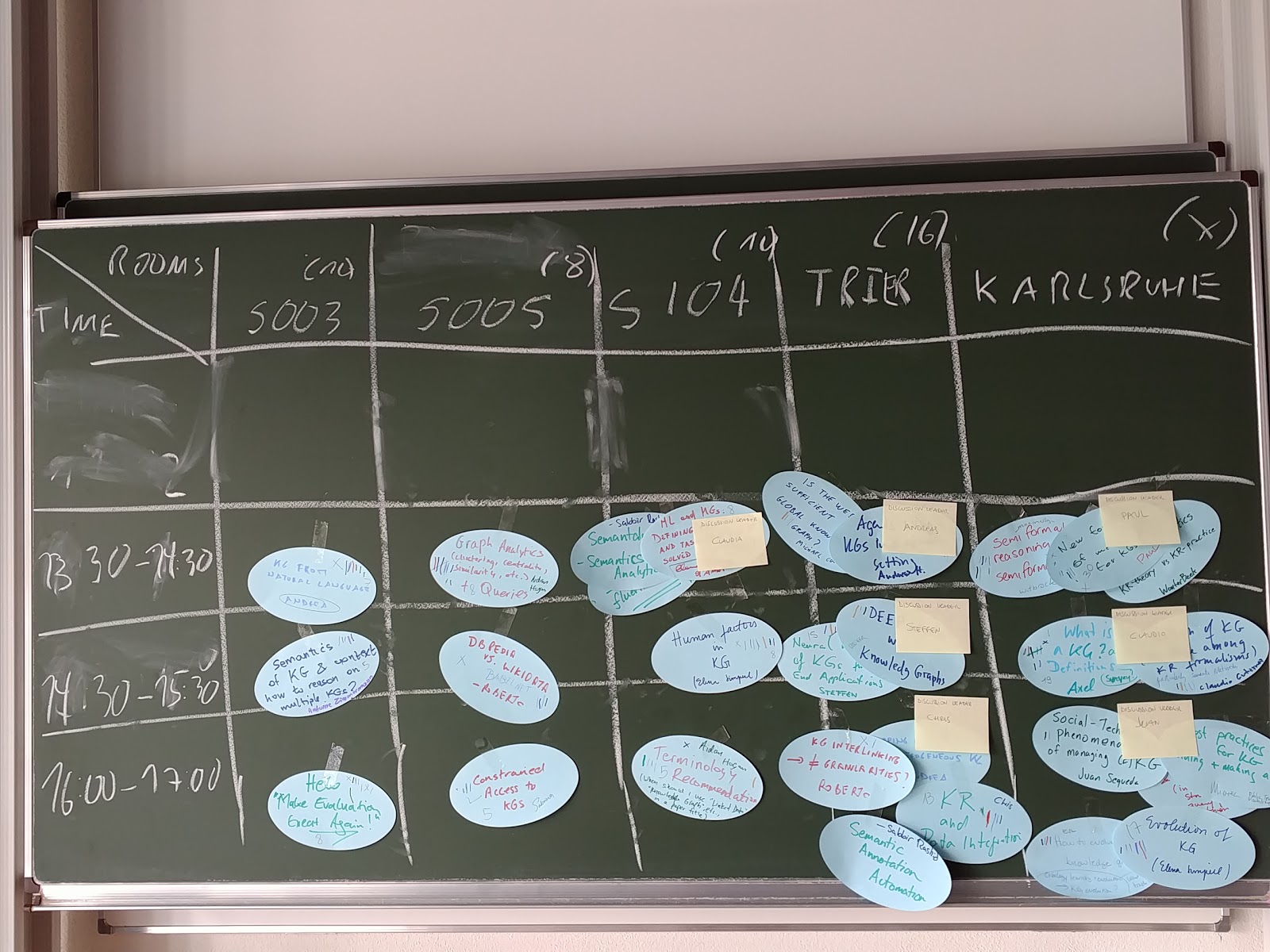
The more popular ones (up to fifteen and having at least three sign ups) were selected to compose the agenda. Each break out session used a one-hour slot during the afternoon. The second day continued with most of the break out sessions with the aim of continuing the discussion started the first day and work towards consolidating a report (finalised on the fourth day). Reports would reflect view and vision emerging from the break out group. On the same day attendees had the opportunity to self-propose to give additional short speeches, addressing missing relevant topics. We used part of the second day's morning for these speeches. We explicitly asked attendees to avoid speeches on "my research" and to only address relevant challenges that were overlooked so far.
On the third day we started with a plenary discussion and the seminar group agreed on splitting into four groups to discuss "Grand challenges" separately, then share the results before going back to the break out sessions. The aim was to share a common high level vision reference before consolidating the more specific discussions that were ongoing in the break out sessions. On the fourth day, the seminar group split again in break out sessions including a "Grand challenges" one. Each session was assigned to at least two coordinators, who committed to consolidate in a draft report the results from the previous meetings. It was decided to merge a few topics, when appropriate.
Break out sessions had varied level of technical abstraction depending on the nature of the topic, and its level of maturity within the state of the art. To give some examples: the break out session about "Grand challenges" mainly discussed a vision for a future research agenda and maintained a high level of abstraction, while the session on "Human and Social Factors in Knowledge Graphs" provided more concrete insights as it could build on both academic and industrial research results, projects and practical experiences. The session on "Applications of Knowledge Graphs" focused on technical details and issues on two relevant sample applications.
Overview of the Report
This report is organised in two main parts: Section 3 includes a list of abstracts providing an overview of the short speeches that we had the first two days. All the other sections are consolidated reports of the emerging vision, research challenges, possible research agenda, and proposed approaches, from break out sessions. When applicable, the reports give an overview of specific relevant research work.
 Piero Andrea Bonatti, Michael Cochez, Stefan Decker, Axel Polleres, and Valentina Presutti
Piero Andrea Bonatti, Michael Cochez, Stefan Decker, Axel Polleres, and Valentina Presutti
- Wouter Beek (University of Amsterdam, NL) [dblp]
- Christian Bizer (Universität Mannheim, DE) [dblp]
- Eva Blomqvist (Linköping University, SE) [dblp]
- Piero Andrea Bonatti (University of Naples, IT) [dblp]
- Daniel Brickley (Google Research - Mountain View, US) [dblp]
- Sarven Capadisli (TIB - Hannover, DE) [dblp]
- Michael Cochez (Fraunhofer FIT - Sankt Augustin, DE) [dblp]
- Claudia d'Amato (University of Bari, IT) [dblp]
- Gerard de Melo (Rutgers University - Piscataway, US) [dblp]
- Stefan Decker (RWTH Aachen, DE) [dblp]
- Michel Dumontier (Maastricht University, NL) [dblp]
- Paul Groth (Elsevier Labs - Amsterdam, NL) [dblp]
- Claudio Gutierrez (University of Chile - Santiago de Chile, CL) [dblp]
- Andreas Harth (Fraunhofer IIS - Nürnberg, DE) [dblp]
- Aidan Hogan (University of Chile - Santiago de Chile, CL) [dblp]
- Sabrina Kirrane (Wirtschaftsuniversität Wien, AT) [dblp]
- Markus Krötzsch (TU Dresden, DE) [dblp]
- Barend Mons (Leiden University Medical Center, NL) [dblp]
- Roberto Navigli (Sapienza University of Rome, IT) [dblp]
- Sebastian Neumaier (Wirtschaftsuniversität Wien, AT) [dblp]
- Axel-Cyrille Ngonga Ngomo (Universität Paderborn, DE) [dblp]
- Andrea Giovanni Nuzzolese (CNR - Rome, IT) [dblp]
- Heiko Paulheim (Universität Mannheim, DE) [dblp]
- Lydia Pintscher (Wikimedia - Germany, DE) [dblp]
- Axel Polleres (Wirtschaftsuniversität Wien, AT) [dblp]
- Valentina Presutti (CNR - Rome, IT) [dblp]
- Sabbir Rashid (Rensselaer Polytechnic Institute - Troy, US) [dblp]
- Sebastian Rudolph (TU Dresden, DE) [dblp]
- Marta Sabou (TU Wien, AT) [dblp]
- Juan F. Sequeda (Capsenta Inc. - Austin, US) [dblp]
- Cogan Matthew Shimizu (Wright State University - Dayton, US) [dblp]
- Elena Simperl (University of Southampton, GB) [dblp]
- Dezhao Song (Thomson Reuters - Eagan, US) [dblp]
- Steffen Staab (Universität Koblenz-Landau, DE) [dblp]
- Volker Tresp (Siemens AG - München, DE) [dblp]
- Marieke van Erp (KNAW Humanities Cluster - Amsterdam, NL) [dblp]
- Frank van Harmelen (Free University Amsterdam, NL) [dblp]
- Maria-Esther Vidal (TIB - Hannover, DE) [dblp]
- Michael Witbrock (IBM Research - Yorktown Heights, US) [dblp]
- Sonja Zillner (Siemens AG - München, DE) [dblp]
- Antoine Zimmermann (Ecole des Mines - St. Etienne, FR) [dblp]
Classification
- artificial intelligence / robotics
- semantics / formal methods
- world wide web / internet
Keywords
- Semantic Web
- Knowledge Representation
- Ontologies
- Linked Data
- Knowledge Graphs

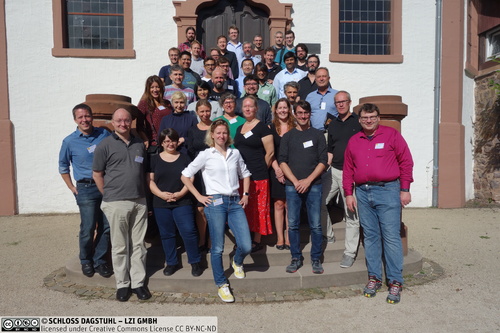
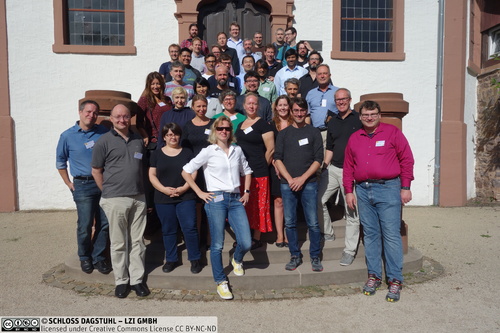
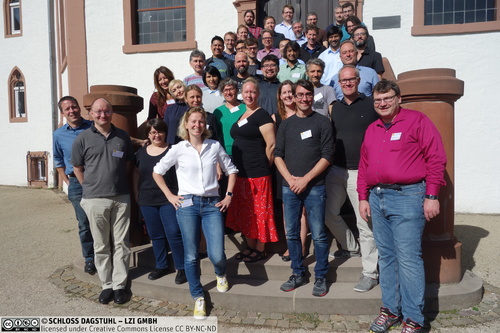
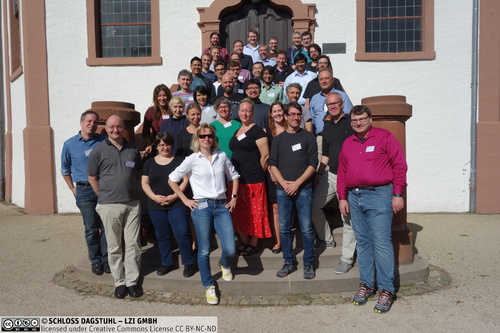
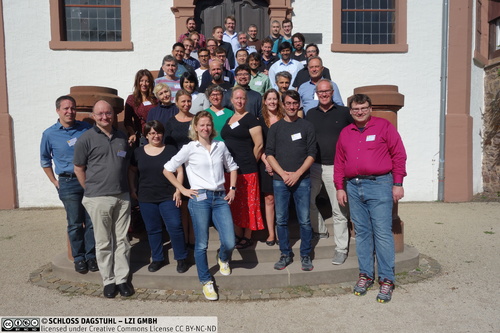
 Creative Commons BY 3.0 DE
Creative Commons BY 3.0 DE
